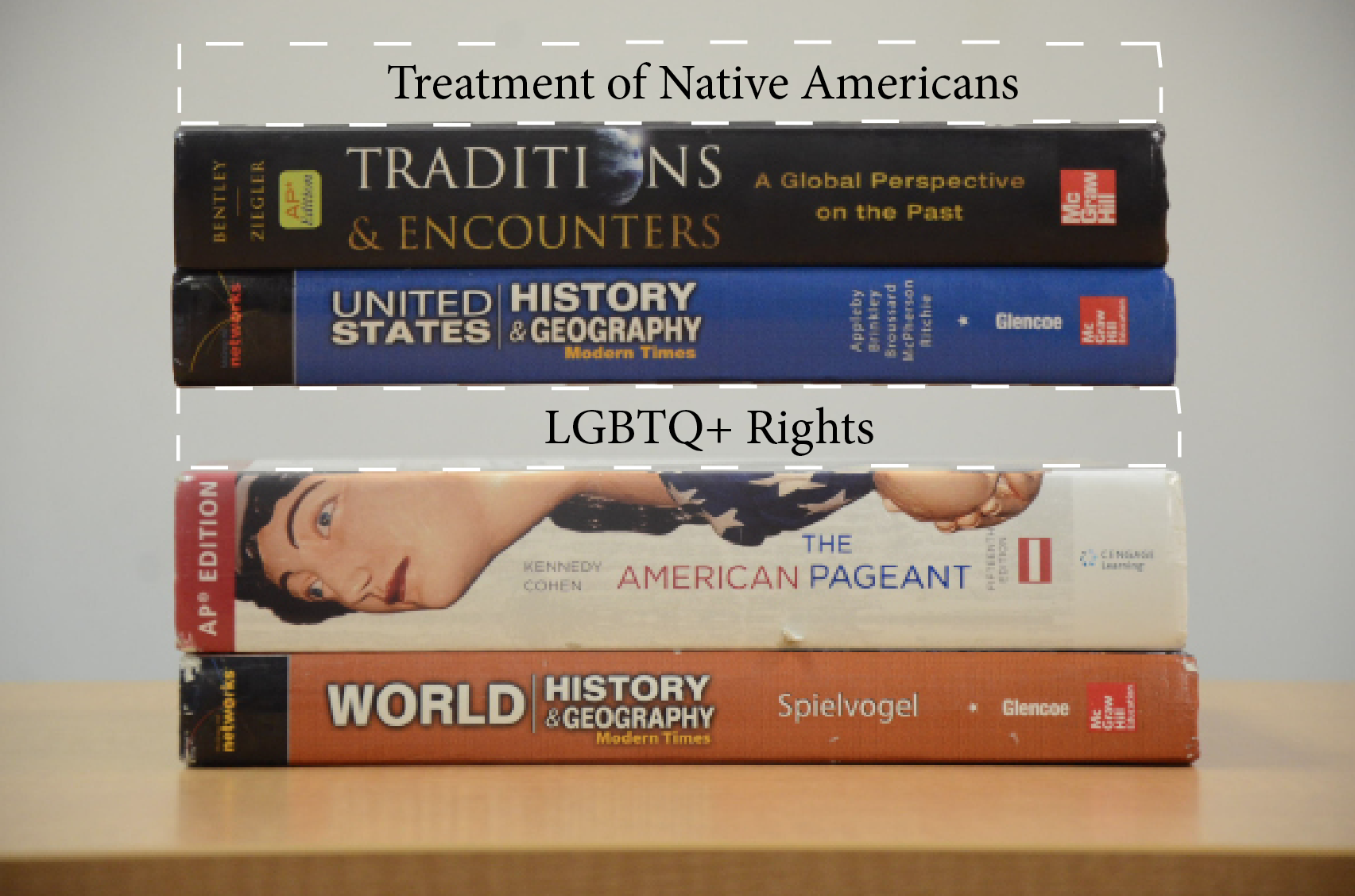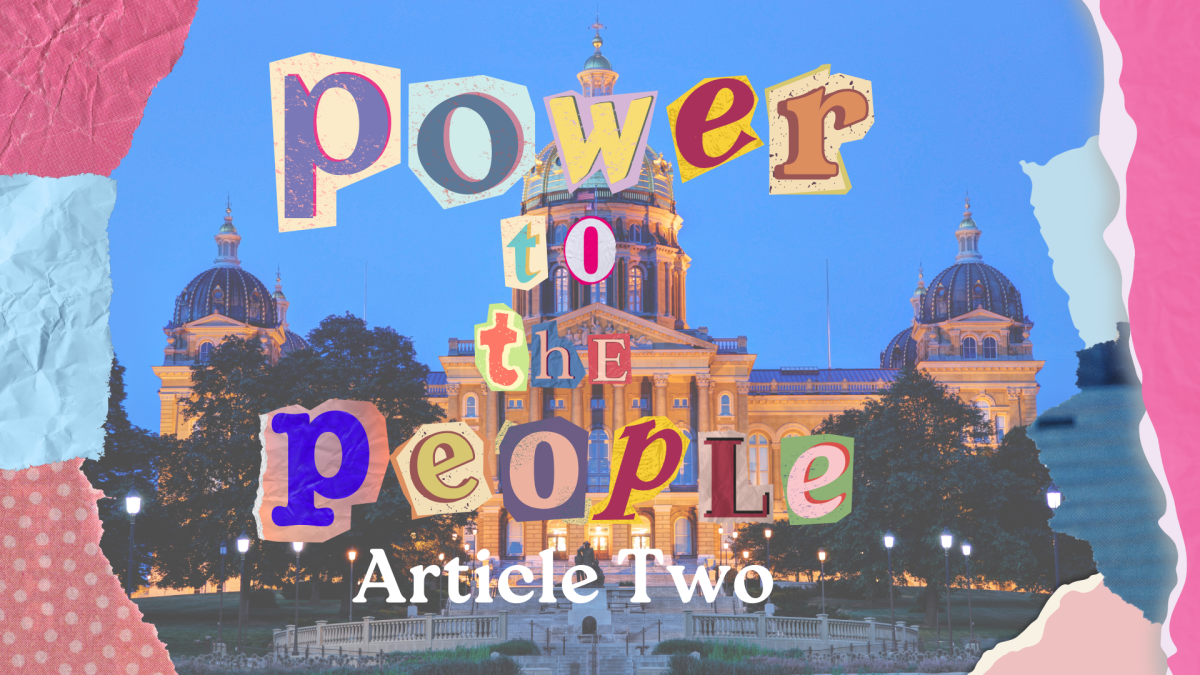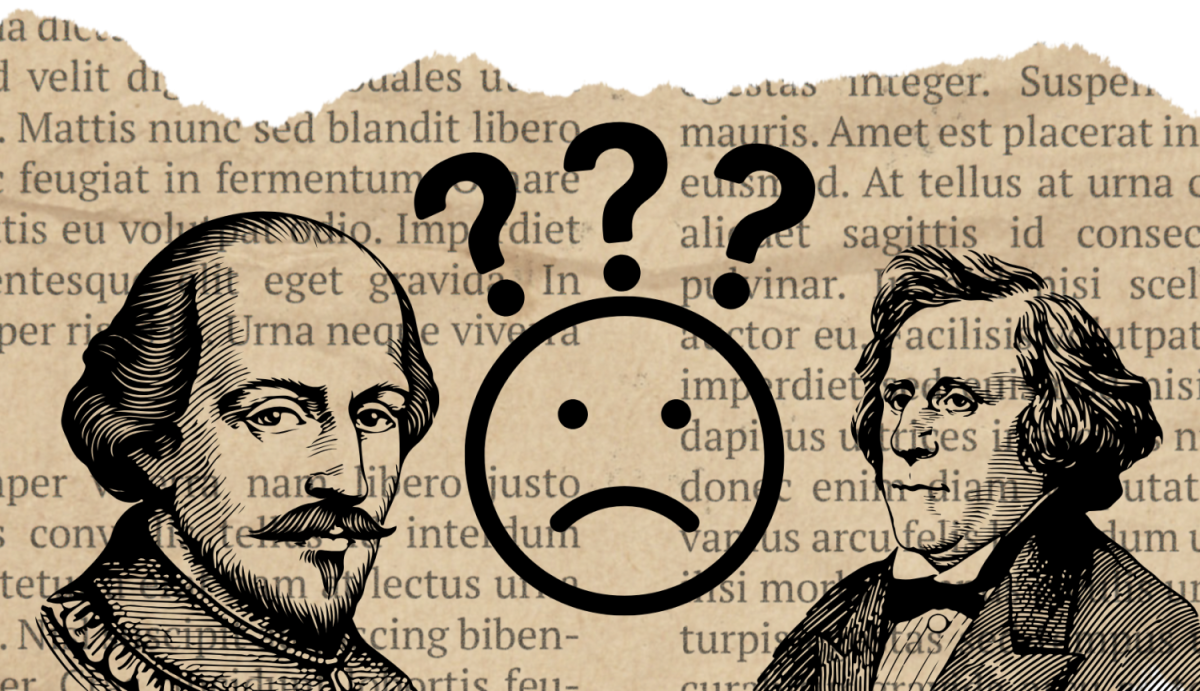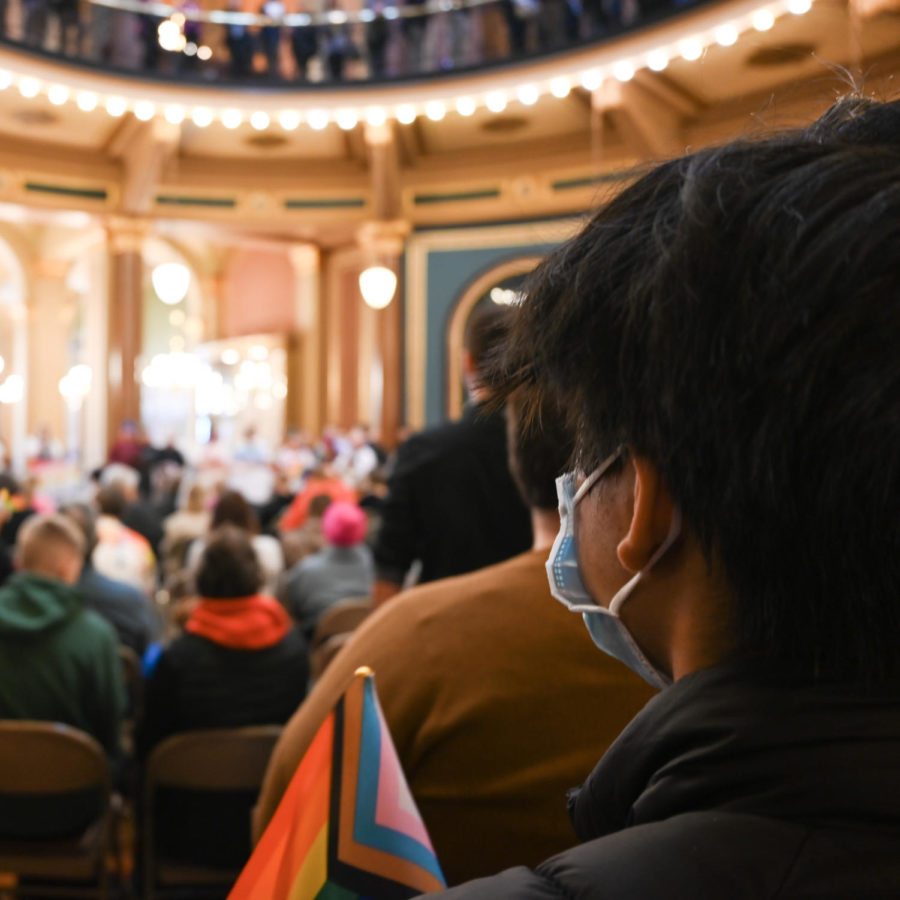From a young age it is taught that Christopher Columbus discovered America. In elementary school you learn that he was on a mission to find gold. Finally, in high school you find out that he burnt down villages and cut off the hands of Native Americans that did not bring him enough gold.
It is nearly impossible to fit thousands of years of history within one, or even multiple history textbooks. Textbooks are meant to teach students important events and facts, while keeping an unbiased stance. However, publishers have been accused of bias for years.
Qatar University professor Dr. Michael H. Romanowski wrote a thesis on textbook bias. “Passages in textbooks that are ‘factually correct’ may also be communicating very selective values and moral judgments,” Romanowski wrote. “This form of bias is more subtle than is bias resulting from inaccurate facts, but it can still be very powerful.”
As classes have limited time and resources, it is difficult to include all important events. U.S. History and Government teacher Jeremy Yenger explained how the department has discussed what curriculum is essential to cover. “We’ve had debates within the department about what is necessary to teach students,” he said. “We’ve had debates outside the department from a vertical articulation perspective, meaning what should they be learning in sixth grade? What should they be learning in seventh grade?”
A.P. U.S. History teacher Jessica Dowell spoke about how the course’s textbook addresses this. “The one thing I will say when looking at any U.S. History textbook is, it never does as well of a job as some teachers would like it to in terms of covering minority perspective,” Dowell said. “Whether it’s gay and lesbian rights, Native American rights, African American rights, latino rights, it never does as well of a job as you would like, covering those perspectives.”
Originally A.P. U.S. History contained little mention of Lesbian, Gay, Bisexual, Transgender (LGBT) rights, Native American treatment, African American treatment, Japanese internment camps and other minority treatment. The course was redesigned three years ago and caused controversy as the curriculum would include more discussion of these topics.
Dowell explained the argument made regarding this transition. “There was a big push from schools that didn’t want their school district to be apart of this redesign because they thought it focused too much on how horrible slavery was, how horrible our treatment of Native Americans was and how horrible a lot of the country was towards African American through a large chunk of history,” Dowell said.
Many students are uninformed on LGBT+ topics, regarding what the movement has gone through. A.P. World History teacher Sue Cline has seen this lack of knowledge first hand. “When I first started teaching history, I had tons of students who honestly thought that homosexuality was created in the 1960s and the 1970s, when all those people were doing all those drugs,” Cline said.
Savannah DeGroot ’17 believes the U.S. History textbook does not talk enough about the LGBT+ community and that there are easy solutions to this problem. “We don’t even touch on the LGBT movement at all,” DeGroot said. “It would be as simple as taking a day or two and going over everything that happened. We spend two weeks on the Vietnam War, but we can’t take two days to learn about the past 50 years of the LGBT movement?”
However, U.S. History is not the only class where bias is evident. World history has often times been told from a European based point of view. “Most of the textbook companies that are providing resources for teachers are going to have either global focus or a western history focus,” Dowell said.
More than half of the chapters in the World Studies textbook focus on European countries. There is little to nothing regard Australia, Africa and South America. “The class is called World Studies, it’s probably misnamed,” Dowell said. “It is probably more of a western civilization course. When we talk about other areas of the world, that aren’t Western Europe, were looking at how do those other areas of the world interact with Western Europe.”
Iowa Core has created standards in hopes of students connecting what they learn to a larger concept. These standards concentrate on behavioral science, economics, geography, history and political science. Yenger bases his lessons on the standards rather than the content from the textbook.
Yenger finds it more important for students to learn how to look at history and connect that to the standards, rather than memorizing dates. The standards allow for students to focus on areas that they prefer to learn about. “You might focus on fashion in the 1950s,” Yenger said. “I’m not teaching you anything about fashion in the 1950s, but you’re creating the argument and how that argument fits into the standard.”
Texas and California have historically disagreed on political matters, and are now fighting to teach different sides of history. These two states control the textbook market, and ultimately sway the decision of what textbook the other 48 states will use. “Your textbook has to be marketable everywhere possible,” Cline said. “Most of the history books that we use are unacceptable in Texas already. If you can’t sell in Texas and California, you might as well not bother.”
California wants to teach a more progressive American history, including events regarding LGBT+ rights. Texas however pushes to use textbooks that highlight the positives and deemphasizing the negative aspects involved in American history. This approach has caused some controversy from teachers and school board members.
Many have varying opinions on the bias in history classes. Some solutions, such as concept based teaching, are being implemented in the history curriculum. There is a push for more inclusive history, gaining support from teachers and students alike.















ob$lay • Apr 28, 2017 at 8:25 pm
nice article boi